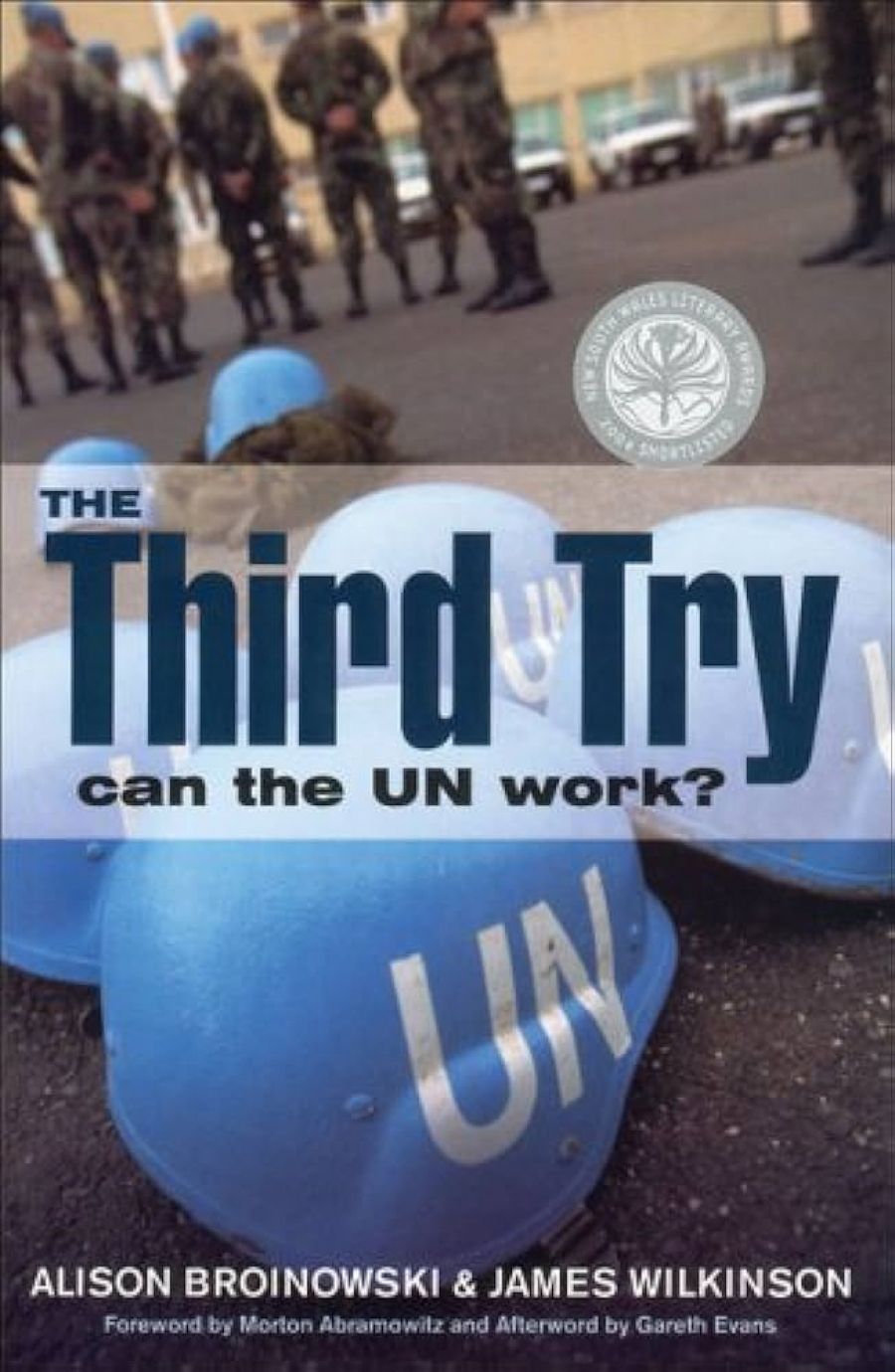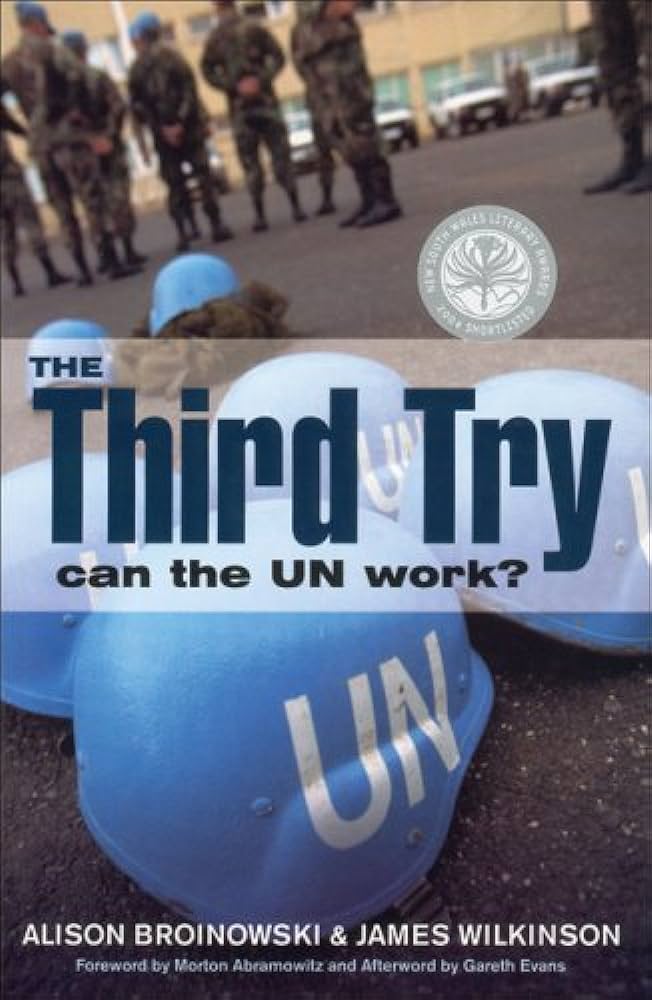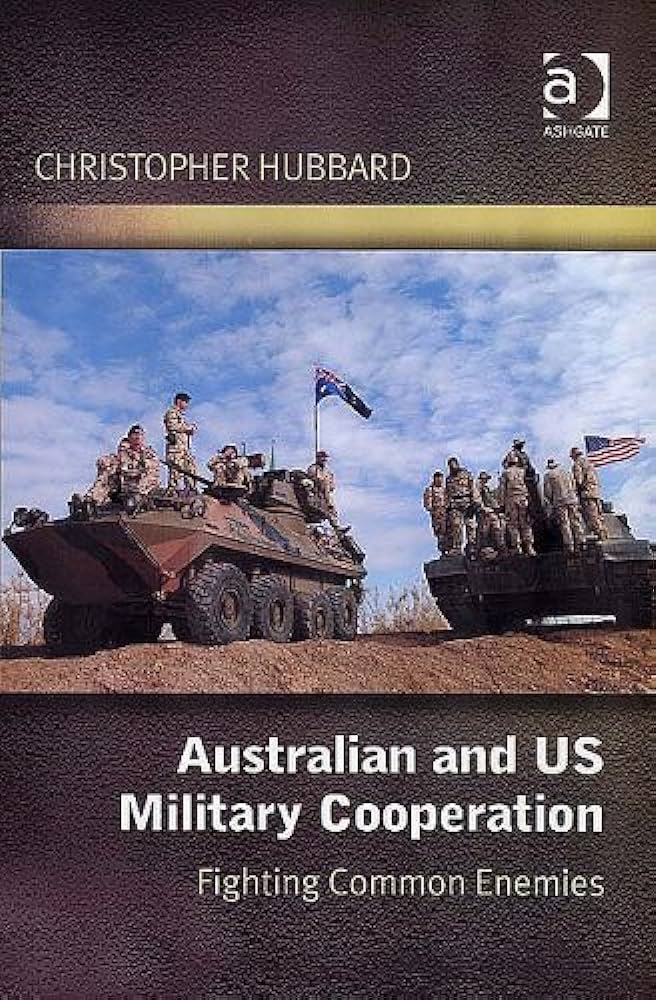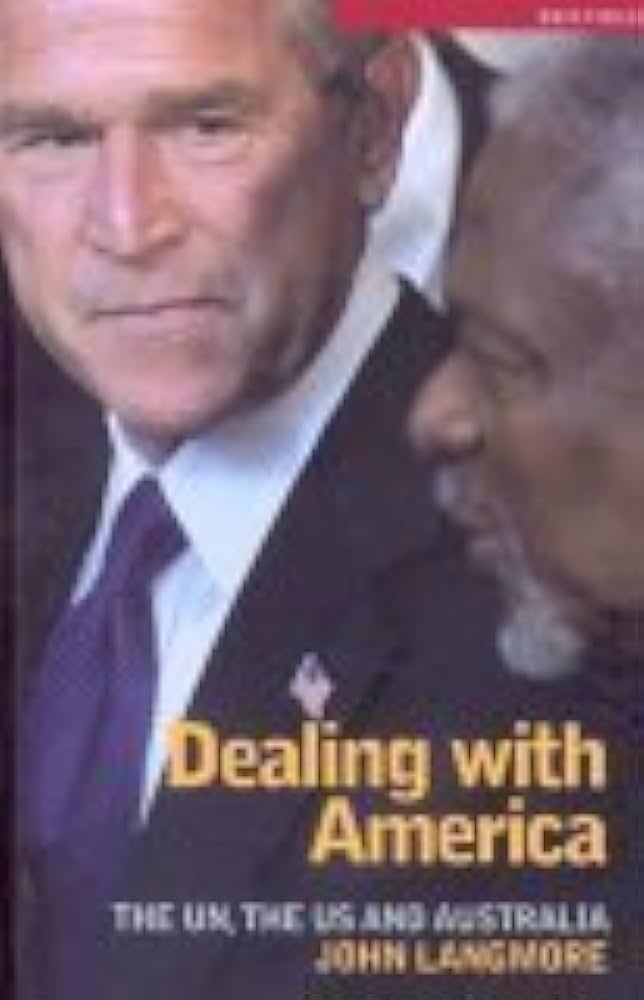
- Free Article: No
- Contents Category: Politics
- Review Article: Yes
- Article Title: Global waiting room
- Online Only: No
- Custom Highlight Text:
Reflecting on the sixty-year history of the United Nations, it seems obvious that this is an organisation created through the slow and tortured process of natural evolution rather than the product of careful, intelligent design.
Years ago, back when the UN had barely escaped its adolescence, the Nobel laureate and eminent diplomat Ralph Bunche observed that ‘the United Nations is a young organisation in the process of developing in response to challenges of all kinds’. He referred to institutional enlargement that typically continued as the global agenda grew. Agencies soon developed to coordinate the work of other agencies. Consequently, the modern UN became a haphazard creature, made up of a bewildering mix of political organs. Each part is intended to serve a different purpose, whether maintaining international security, advancing respect for fundamental human rights, or promoting economic development. And each component comes labelled with an almost impossible array of scientific-sounding designations (EcoSoc, for instance, UNEP, UNESCO, UNICEF and plenty more to make up page after page of abbreviation lists).
- Book 1 Title: The Third Try
- Book 1 Subtitle: Can the UN work?
- Book 1 Biblio: Scribe, $35 pb, 318 pp
- Book 1 Cover Small (400 x 600):

- Book 1 Cover (800 x 1200):

- Book 2 Title: Australian and US Military Cooperation
- Book 2 Subtitle: Fighting common enemies
- Book 2 Biblio: Ashgate, $89.95 hb, 181 pp
- Book 2 Cover Small (400 x 600):

- Book 2 Cover (800 x 1200):

- Book 3 Title: Dealing With America
- Book 3 Subtitle: The UN, the US and Australia
- Book 3 Biblio: UNSW Press, $16.95 pb, 104 pp
- Book 3 Cover Small (400 x 600):

- Book 3 Cover (800 x 1200):

Yet today, many parts of this international body show the visible signs of ageing – experience has demonstrated that its various functions often overlap, or worse, like a body’s appendix, have proved to be redundant. Compounding this institutional weakness, the UN members – the governments of the world – often behave like free radicals. While jealously protecting their sovereign independence and ability to do just as they please, states simultaneously demand that the UN itself does more to treat the cancerous effects of war, poverty and environmental destruction.
Alison Broinowski and James Wilkinson successfully map out this ‘politically deformed’ anatomy in their joint effort, The Third Try: Can the UN Work?. This trans-Pacific collaboration between two former diplomats is an engaging diagnosis of the UN; the book provides an accessible overview of many contemporary international challenges and of how the UN operates. They address the broad themes of peace, economic development, and global justice through a series of intermittent short case studies that serve to illustrate each chapter. Issues surrounding the advancement of women, for instance, the risk from pandemic disease, and the threat of terrorism are all covered in useful detail.
Importantly, and rarely for a book of this kind, constant reference is made throughout the discussion to the powers that are provided by the UN Charter. This foundational document in international law is the guide that directs UN actions. All 191 members of the UN agree to uphold the Charter without reservation. The focus on the Charter provides a powerful rebuttal to critics who argue that the UN threatens the independence of states. It demonstrates that governments freely agreed to join together and accept an international constitution, of a sort. Today’s challenges revolve around the same paradox faced by world leaders sixty years ago when first signing the Charter. The key question is how to advance the common goals of global humanity in an international system that remains divided among competing independent states.
Unfortunately, the Charter remains more often an aspiration rather than an authority. In an unstated amputation, certain features are commonly ignored, particularly the original intention to establish a standing international military force. It is a depressing truth, as Broinowski and Wilkinson note, that, for all the development of international law during the past century, the reaction after September 11 was to respond first with violence. Although the selective interpretation of the Charter has diminished the capacity to fulfil the original intent of the UN founders, the authors demonstrate how this document remains the essential skeleton that animates this international body, from which each of the constituent parts stem.
The ‘Third Try’ reference in the book’s title recalls the political ancestry of earlier efforts to regulate the brutal nature of world politics. The first try, the League of Nations, succumbed to the malady of power politics after World War I, failing to counter the expansionist aggression of fascist régimes. In 1945 establishing the UN seemed to offer a new cure for the world’s ills, an optimism about the second try that was progressively crushed by the paralysing strain of anxiety that dominated the Cold War. When the Berlin Wall came down, it seemed an opportunity to strengthen the UN in the third try, escaping the organisational arrhythmia brought on by the superpowers’ capricious rivalry.
Broinowski and Wilkinson focus on the international experience after the Cold War, through the 1990s and up until today. There is little doubt that this episode has provided a tonic to the UN, as a simple measurement of Security Council activity demonstrates. The resolution in response to the Iraqi invasion of Kuwait in 1990 was officially numbered 660 – a paltry total accumulated over forty-five years. Now, a decade and a half later, the total number of Security Council resolutions passed is more than 1600, a fourfold increase.
But the revival that characterised the early years of the third try proved to be a temporary remission. Familiar symptoms of mistrust and discord soon returned, exacerbated by the experience of international peacekeeping disasters in places such as Somalia and Rwanda.
Allowing the usual disclaimer for a book with such an ambitious scope – that it is impossible to include everything – the authors do adopt a narrow, legalistic approach to the question: ‘when is armed force justified to end violations of human rights, and who decides?’ Gareth Evans rightly points out, in his brief afterword, that this issue of humanitarian intervention is one of the most pressing concerns of our time. But the complex moral question of ‘how’ to use armed force to end violations of human rights – or put more dramatically, how to kill people to save lives – is scarcely discussed.
This omission is significant because the failure to match promises with deeds has fuelled scepticism about the international use of force. More than ever, with the global balance of power gone, the US has become the focus of international animosity. Broinowski and Wilkinson leave in no doubt their view that American ‘conservative hardliners’, fortified by ‘perpetual disdain’ for international law, are the virus that threatens the future of the UN. ‘It is as if the US and its supporters inhabit a parallel judicial universe,’ they despair. Of those menial US supporters, the authors spare no time for flattery, such as accusing the Australian government of sinking to the level of the worst human rights abusers.
The book makes clear the view that the world has divided between those people who see a commitment to international law as the only way forward for civilisation, and others who refuse to accept any restraint on the pursuit of their own interests. As an example of a country that straddles this divide, the US is at once accused of having ‘enfeebled’ the UN while, at the same time, possessing the ‘kind of forceful leadership’ that is essential for the UN to work.
America is both the great hope and the villain in this analysis. The authors carry a studied optimism about the continuing relevance of the UN into the future. Yet they make little effort to describe how the US will be persuaded further to commit to the international organisation. Instead, a kind of fatalism is evident as they speculate on the folly of the US invasion of Iraq without a Security Council imprimatur, along with how the Bush administration’s disdain for international law could lead to ‘a UN without the US’, coupled with the danger of ‘crusading American exceptionalism’.
John Langmore’s short volume Dealing with America: The UN, the US and Australia – another title in the excellent UNSW Press–Australian Policy Online Briefings series – is more hopeful about both the UN and the prospects of recovering the necessary US enthusiasm for the international body. He covers similar ground to Broinowski and Wilkinson, reviewing recent proposals for UN reform and general international relations after Iraq. He also criticises the ‘ferocity of the American right’ in their pursuit of the UN through the recent oil-for-food scandal. What Langmore makes obvious is how vigorously the view of American exceptionalism is debated within the US itself. He puts his faith in the vitality of public exchange to sway opinion back toward support for multilateral frameworks, if not immediately then gradually.
Since Australia is a more explicit focus, Langmore frames the discussion around implications for the junior American ally. ‘By adopting a more independent, principled and nuanced stance,’ he counsels, ‘Australia would support the large body of opinion within the United States which accepts the imperative of global cooperation.’ In this analysis, Australian political leaders are presented with a choice in their approach to foreign affairs – the idea of bilateral alliance-building, strengthening Australia in the world, versus the idea of multilateral institution-building, strengthening the world for Australia.
No doubt politicians will argue for both opportunities.
It is an important public debate, and one likely to resonate. While Langmore advocates a commitment to the UN, Christopher Hubbard shows, in Australian and US Military Cooperation: Fighting Common Enemies, how the impulse to side with a powerful ally is strong in Australia. The alliance relationship between Australia and the US has lasted through many active conflicts since 1945, the political turmoil after New Zealand’s decision to ban visits by nuclear ships in the 1980s, and even the recent vexed negotiation of a free trade agreement. The 800-odd word ANZUS Treaty, as it is still officially known, dates from almost the same era as the UN Charter.
Hubbard’s history is more formal than the other two books, but it works effectively as a complement, a starting place to explore the parallel treatment for international anxiety. His analysis is thorough, if perhaps too ambitious in attempting to survey the experience of the entire fifty years.
An interesting political contest emerges within Australia over the heritage of the US alliance compared to that of the UN. Both Labor and the Coalition eagerly claim ownership of the alliance: a Liberal government negotiated the formal treaty in 1951; a Labor government earlier turned to the US for help during World War II. It is hard to detect a similar dispute over Australia’s traditional support for the UN.
While the Coalition always carried perceived doubts about the value of collective security, it has increasingly conceded this intellectual policy area to Labor. Foreign Minister Alexander Downer casually dismisses multilateral approaches as ‘a synonym for an ineffective and unfocused policy involving internationalism of the lowest common denominator’. This contrasts sharply with his Labor shadow, Kevin Rudd, who has argued that: ‘our attachment to the UN is not based on historical sentiment. It is anchored in current strategic reality.’
The health of the UN depends on the commitment of its members. The future prognosis is never clear. But don’t consign the UN to palliative care just yet.


Comments powered by CComment